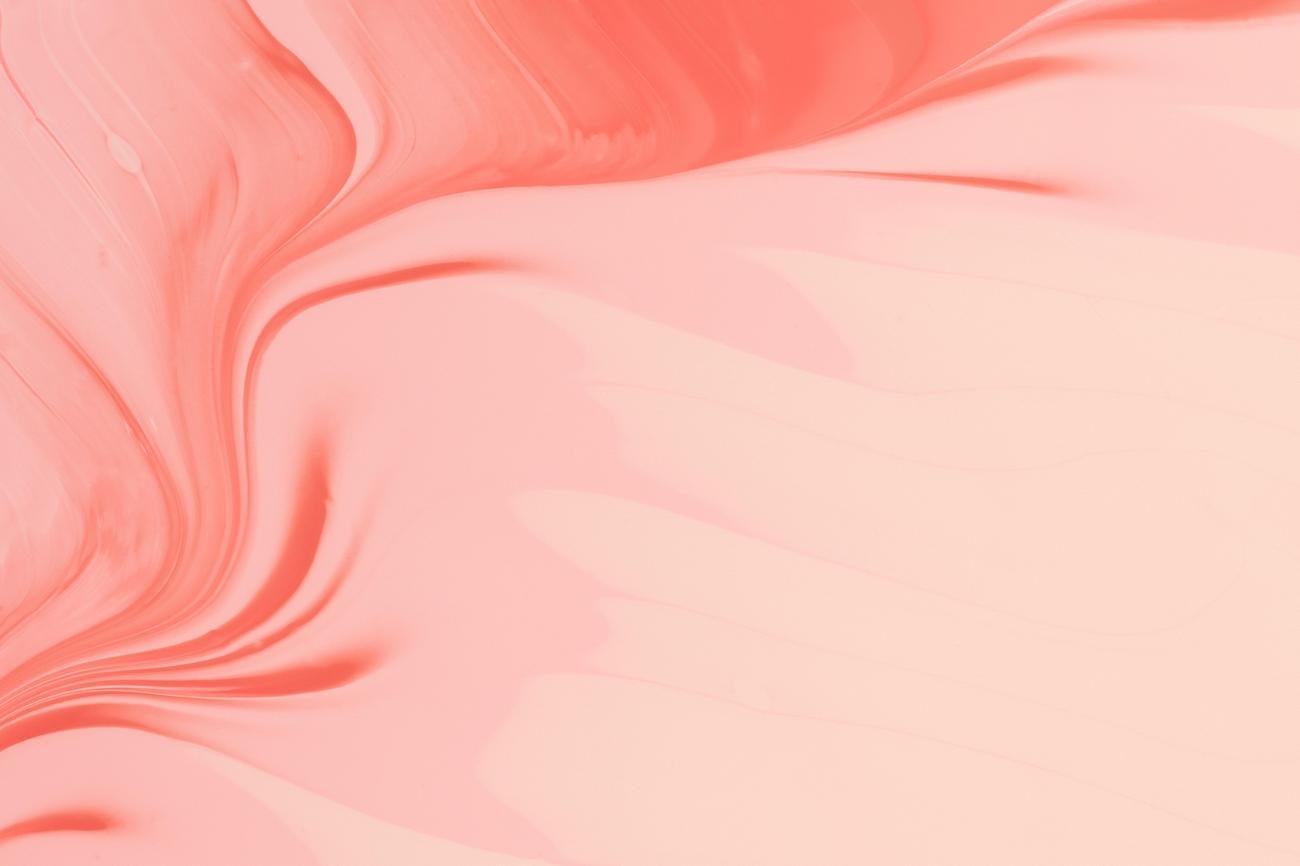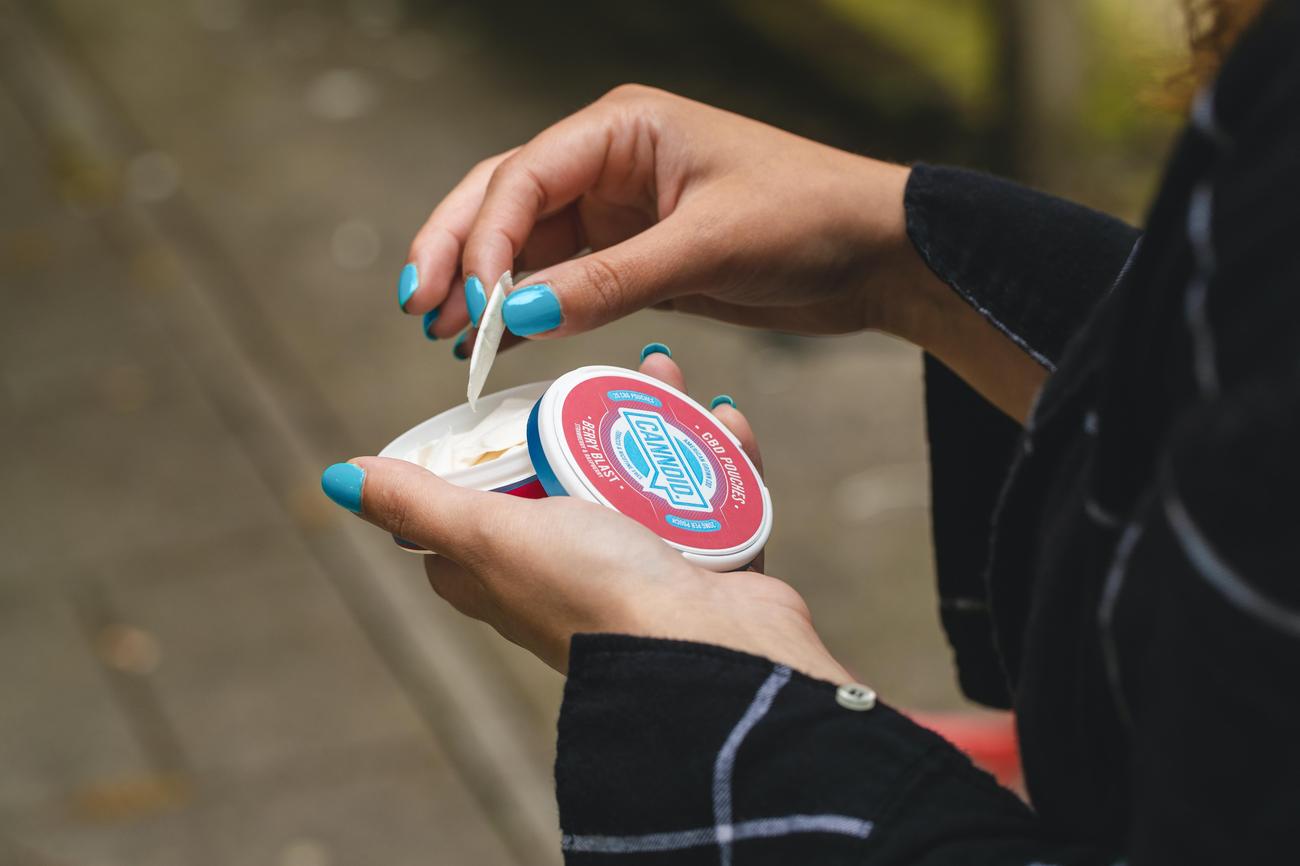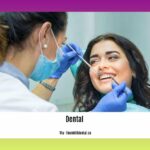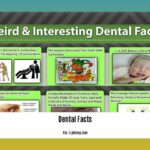Welcome to the captivating world of toothpaste! In this article, titled “Toothpaste Tales: Unveiling the Fun Facts,” we will delve into the fascinating history of toothpaste and explore some intriguing tidbits that will leave you amazed. Before modern toothpaste came into existence, did you know that eggshells and crushed bones were once used to clean teeth? As a seasoned dental hygienist with a deep understanding of oral care, I am thrilled to take you on a journey through the evolution of toothpaste and share some lesser-known facts that will surely spark your interest. So, sit back, relax, and get ready to uncover some enchanting tales about toothpaste and the secrets it holds!

Fun Facts About Toothpaste
Did you know that toothpaste has a fascinating history that dates back to ancient times? Let’s dive into some fun facts about toothpaste that will surely leave you surprised and enlightened.
1. Ancient Origins:
Toothpaste wasn’t always the minty fresh gel or paste we know today. In ancient China and India, toothpastes were made from burnt eggshells, oyster shells, crushed rock salt, and herbs. Talk about a natural approach to dental hygiene!
“Toothpaste has come a long way from its humble beginnings. Ancient civilizations were quite resourceful with their dental care concoctions!”
2. Modern Beginnings:
The first modern toothpaste, as we recognize it today, was produced in 1780. Imagine using toothpaste that is over two centuries old! Thankfully, dental science has progressed since then, improving the effectiveness and taste of our oral care products.
3. Crest and Colgate:
Two household toothpaste brands, Crest and Colgate, have shaped the oral care industry. Colgate introduced its toothpaste in 1873, while Crest made its first appearance in the United States in 1955. These companies have been instrumental in revolutionizing oral health worldwide.
4. A Preserving Ingredient:
Did you know that toothpaste contains formaldehyde? Yes, the same chemical used for preserving bodies. But don’t worry, the amount in toothpaste is minimal and safe for oral use. It’s intriguing to discover the surprising ingredients that go into our daily dental routine.
5. Polishing Power:
Toothpaste is not just for teeth! It can also be used to polish silver jewelry. The mild abrasives in toothpaste help remove tarnish, making your silver pieces shiny and good-as-new. It’s like having a dual-purpose product right in your bathroom cabinet.
“Who knew toothpaste could go beyond oral care? It’s like having a secret silver polishing agent at your disposal!”
6. Fluoride, the Hero:
Fluoride is the most important ingredient in toothpaste, providing crucial protection against tooth decay. It strengthens the enamel and helps prevent cavities. So, the next time you brush your teeth, remember the mighty power of fluoride fighting for your dental wellbeing.
7. Whitening Misconception:
Have you ever used a toothpaste marketed as “whitening”? Well, here’s a fun fact: whitening toothpaste doesn’t actually bleach or lighten your teeth. It contains mild abrasives that help remove surface stains, giving the illusion of whiter teeth. Professional treatments or whitening strips are what you need for a significant color change.
“Don’t be fooled by the term ‘whitening toothpaste.’ It’s more like a stain remover for your pearly whites!”
8. Natural vs. Fluoride:
While natural toothpastes have gained popularity, they often lack a vital ingredient for dental health: fluoride. Fluoride plays a crucial role in strengthening enamel and preventing tooth decay. So, when considering natural alternatives, be mindful of the missing fluoride protection your teeth may need.
“Going natural is great, but don’t forget to check if your toothpaste contains fluoride. Your teeth will thank you!”
From its ancient beginnings to its current impact on our oral health, toothpaste is an intriguing subject. These fun facts about toothpaste remind us of the diverse influence it has had throughout history and the ongoing advancements in dental hygiene.
So, the next time you squeeze that toothpaste onto your brush, remember the hidden tales and wonders behind this everyday essential.
Table:
| Fun Fact | |
|---|---|
| Toothpaste was first invented in 500 BC | :calendar: Ancient Origins |
| The first modern toothpaste was produced in 1780 | :calendar: Modern Beginnings |
| Crest created its first toothpaste in 1955 | :calendar: Crest and Colgate |
| Toothpaste contains formaldehyde | :test_tube: A Preserving Ingredient |
| Toothpaste can be used to polish silver jewelry | :sparkles: Polishing Power |
| Ancient toothpastes were made from burnt eggshells, oyster shells, crushed rock salt, and herbs | :herb: Ancient Origins |
| The world’s first known toothpaste recipe was written in the 5th century by an Egyptian | :scroll: Ancient Origins |
| Fluoride is the most important ingredient in toothpaste | :tooth: The Hero, Fluoride |
| Whitening toothpaste does not actually whiten teeth | :toothpaste: Whitening Misconception |
| Natural toothpastes may be missing fluoride | :leaf: Natural vs. Fluoride |
Toothpaste is a household staple that goes beyond just brushing our teeth. Did you know that toothpaste can also be used to magically get rid of bruises? Yes, you read that right! If you’re wondering how to get rid of bruises with toothpaste, we’ve got you covered. Just click here to learn more about this amazing toothpaste hack: how to get rid of bruises with toothpaste.
But that’s not all! Toothpaste can also work wonders when it comes to removing hickeys in seconds. Say goodbye to those embarrassing marks with a simple trick using toothpaste. Intrigued? Click here to find out how to remove a hickey in seconds with toothpaste: how to remove a hickey in seconds with toothpaste.
Now that you’ve discovered some incredible uses of toothpaste, it’s time to dive into more fun facts about this everyday product. Learn about its origins, different types, and fascinating trivia by clicking here: fun facts about toothpaste.
Remember, toothpaste is not just for dental hygiene anymore. It can be a versatile solution for various everyday problems. So why wait? Explore the possibilities and unleash the power of toothpaste today!
Toothpaste and Skin
When it comes to toothpaste, our minds typically associate it with sparkling teeth and fresh breath. But did you know that toothpaste can also have an impact on our skin? Yes, you heard it right! This everyday essential can do more than just take care of your pearly whites. In this section, we’ll dive into the fascinating world of toothpaste and explore its surprising relationship with our skin.
The Versatility of Toothpaste
Toothpaste is like a multi-tool in the realm of personal care. While it’s primarily designed for your teeth, its unique properties make it applicable in other areas as well. Have you ever noticed how toothpaste has a drying effect? Well, that very quality can come handy in certain situations. Got a pesky bug bite? Apply a small dab of toothpaste to soothe the itchiness. Dealing with an unexpected pimple? Toothpaste can come to the rescue by drying it out overnight. Who knew that toothpaste had such hidden talents?
“Toothpaste is more than just a tube of oral care, it’s a secret weapon for your skin problems.”
Sensitive Skin Alert
While toothpaste can work wonders for bug bites and blemishes, not all kinds are suitable for our skin. That’s because toothpaste often contains an ingredient called sodium lauryl sulfate (SLS) which can be too harsh for sensitive skin. Using toothpaste with SLS on your face or blemishes might lead to skin irritation. So if you’re planning to try toothpaste as a skincare hack, make sure to choose a gentle and SLS-free toothpaste option.
“Toothpaste, the superhero for your teeth, can sometimes be the villain for your skin. Choose wisely!”
The Fluoride Conundrum
Ah, fluoride – the hero in our dental hygiene routine. It’s the ingredient that strengthens our tooth enamel and protects against cavities. But when it comes to toothpaste’s impact on the skin, fluoride can be a bit tricky. You see, there are natural toothpaste options available that don’t contain fluoride. While these natural alternatives might appeal to some, it’s important to note that fluoride plays a vital role in preventing tooth decay. So, if you choose a fluoride-free toothpaste, just remember to compensate with other fluoride sources like mouthwash or your drinking water.
“Fluoride, the defender of our oral health, might just be a friend or foe for our skin. Balance is key!”
Toothpaste and Its Sidekicks
Toothpaste doesn’t just rely on fluoride alone to do its job. It’s a team effort with other active ingredients that tackle specific oral care concerns. From reducing tooth sensitivity to preventing tartar build-up and fighting bad breath, toothpaste has an entire squad working behind the scenes. So next time you brush your teeth, take a moment to appreciate the teamwork happening inside your mouth!
“Toothpaste – the ultimate squad for your oral health, fighting the battles you didn’t even know existed!”
In conclusion, toothpaste isn’t just a one-trick pony for your teeth. Its versatility extends beyond oral care, making it a surprising ally in addressing bug bites and pimples. However, it’s essential to be cautious if you have sensitive skin and to be mindful of the fluoride content in your toothpaste. And let’s not forget the team of active ingredients working their magic to keep our mouths happy and healthy. So, whether it’s on your teeth or as a handy skin remedy, toothpaste holds many tales beyond what meets the eye!
“Toothpaste – the unsung hero of our oral care routine, with a few surprises up its sleeve!”
Before Modern Toothpaste, We Used Eggshells and Crushed Bones
Toothpaste has become an indispensable part of our daily oral care routine, but have you ever wondered what people used before the advent of modern toothpaste? Brace yourself for some fascinating dental history! Before we had the luxury of minty gels and sparkling gels, our ancestors got creative with their oral hygiene. In fact, toothpaste predates the toothbrush itself! Ancient civilizations like the Egyptians were pioneers in oral care, concocting dental creams that contained surprising ingredients like powdered ashes from oxen hooves, myrrh, eggshells, and even pumice. It’s safe to say they were a far cry from the toothpaste we know today.
“The evolution of toothpaste is truly intriguing, with ancient civilizations experimenting with diverse ingredients to care for their teeth.”
In those ancient times, tooth powders were all the rage. They were made from abrasive substances like talc or crushed seashells. Egyptians, in particular, took things to the next level by using crushed oyster shells to create their own tooth powder. Eggshells and crushed bones were also common components, proving that our ancestors really knew how to put every part of the chicken to good use.
“Who would have thought eggshells and bones could act as gentle abrasives to clean teeth? Our ancestors were true dental innovators!”
As time went on, toothpaste formulations evolved and became more sophisticated. Modern toothpastes still contain abrasives, but they are much milder compared to the earlier ingredients like crushed eggshells and pumice. They gently polish the teeth, ensuring a clean and smooth surface without causing any damage. It’s mind-boggling to think about the advancements in toothpaste technology over the years.
“From crushed bones to gentle abrasives, toothpaste has come a long way in striking the perfect balance between effective cleaning and protecting our pearly whites.”
Today, toothpaste plays an essential role in maintaining and improving our oral health and aesthetics. It’s not just about cleaning our teeth; toothpaste helps fight cavities, freshens breath, and even whitens our smiles. While we’re accustomed to the minty and refreshing flavors of modern toothpastes, there are natural remedies like baking soda that can also be used effectively. Who knew dental hygiene could be so versatile?
“Modern toothpaste is a true multitasker, catering to our dental needs while embracing different flavors and remedies.”
But did you know that toothpaste can actually alter the taste of food? Yes, that’s right! The ingredients in toothpaste can temporarily affect our taste buds, making certain foods taste different after brushing. So if you’ve ever had that weird experience of orange juice tasting strange after brushing your teeth, you’re not alone!
“Toothpaste adds an interesting twist to our culinary adventures, making everyday flavors temporarily go haywire.”
Toothpaste has even had its fair share of novelty moments. Remember those striped toothpaste tubes that burst onto the scene in the 1950s? It was a sheer delight to squeeze out a ribbon of red and white or blue and white paste onto our toothbrushes. This fun innovation added a touch of whimsy to our dental routine and made brushing just a little bit more exciting.
“Who could resist the playful allure of striped toothpaste? It brought a dash of color to the mundane task of brushing our teeth.”
So, the next time you squeeze that dollop of fresh toothpaste onto your brush, take a moment to appreciate the impressive journey that led us here. From burnt eggshells and crushed bones to the modern wonders we have today, toothpaste has truly been a game-changer in oral care. Let’s not forget the ingenuity of our ancestors, who paved the way for the minty-fresh smiles we enjoy today.
“Every time we brush our teeth, we pay homage to the ingenious minds behind toothpaste’s evolution. It’s a testament to human creativity and the quest for a brighter, healthier smile.”

FAQ
Question 1
What were ancient toothpastes made from?
Answer 1
Ancient toothpastes were made from a variety of ingredients including burnt eggshells, oyster shells, crushed rock salt, and herbs.
Question 2
What is the most important ingredient in toothpaste?
Answer 2
The most important ingredient in toothpaste is fluoride, as it helps strengthen tooth enamel and prevent tooth decay.
Question 3
Do natural toothpastes contain fluoride?
Answer 3
No, natural toothpastes may not contain fluoride, which is a vital ingredient for preventing tooth decay.
Question 4
Can toothpaste be used for purposes other than oral care?
Answer 4
Yes, toothpaste can be used to polish silver jewelry as it helps in removing tarnish. It can also be used to relieve bug bites and pimples on the skin.
Question 5
Has toothpaste formulation changed over time?
Answer 5
Yes, toothpaste formulations have evolved considerably over time. Early tooth powders were made from abrasive substances like crushed seashells, while modern toothpastes contain more gentle abrasives.
- Mastering Leader in Spanish: The Complete Guide - April 19, 2025
- Uncovering Surprising Parallels: England Size Compared to US States - April 19, 2025
- Old Mexico Map: Border Shifts 1821-1857 - April 19, 2025
















